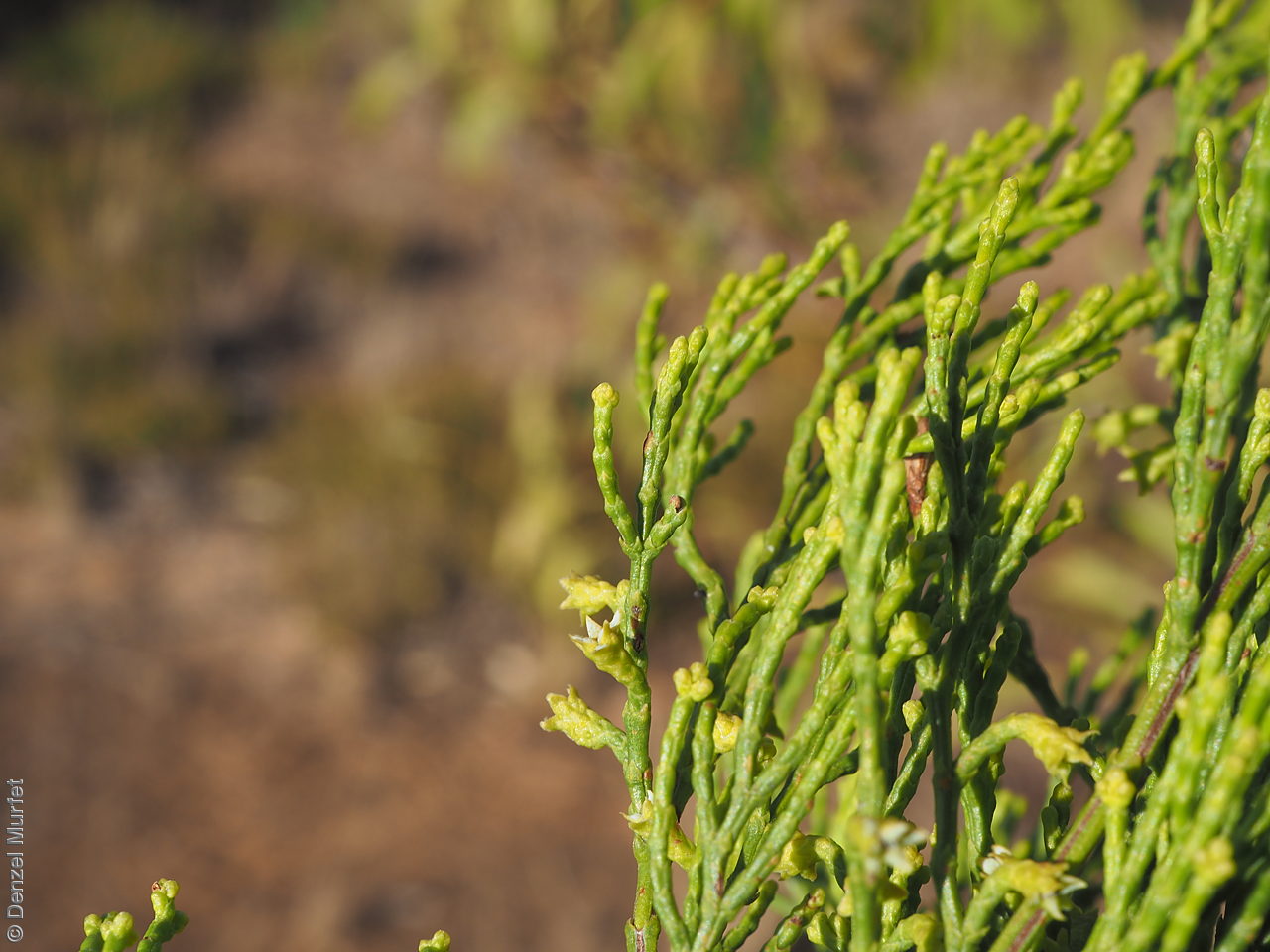
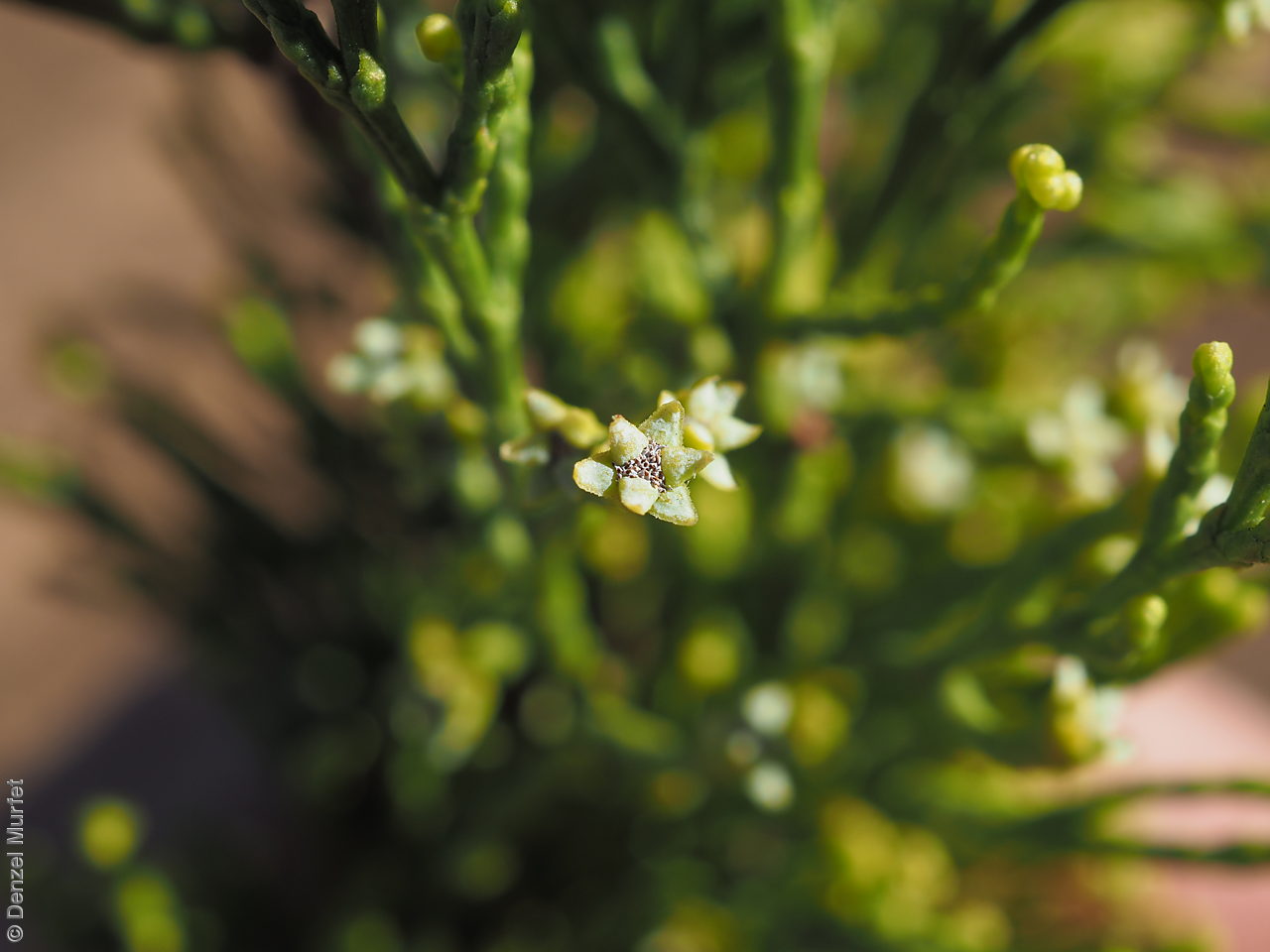
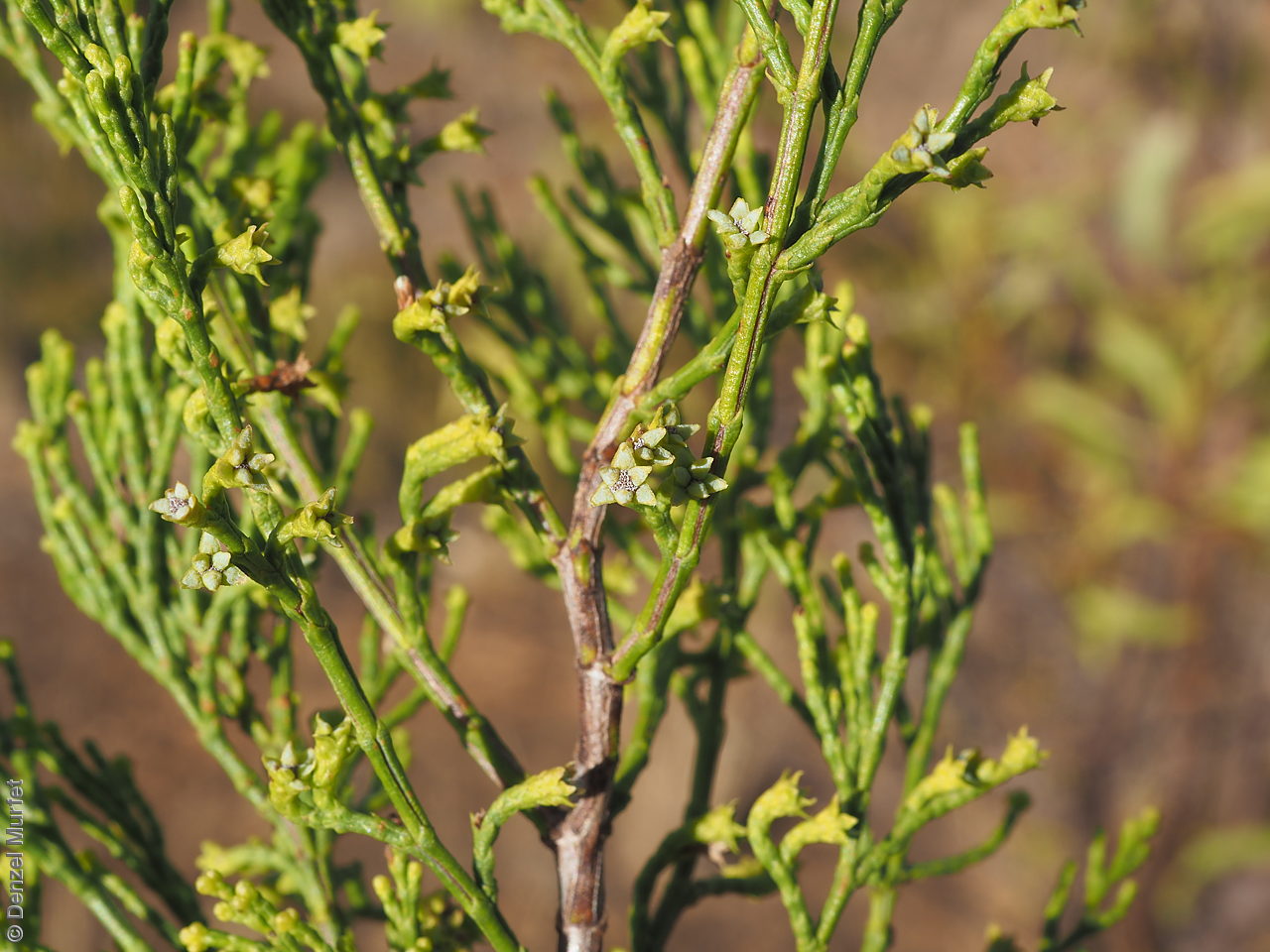
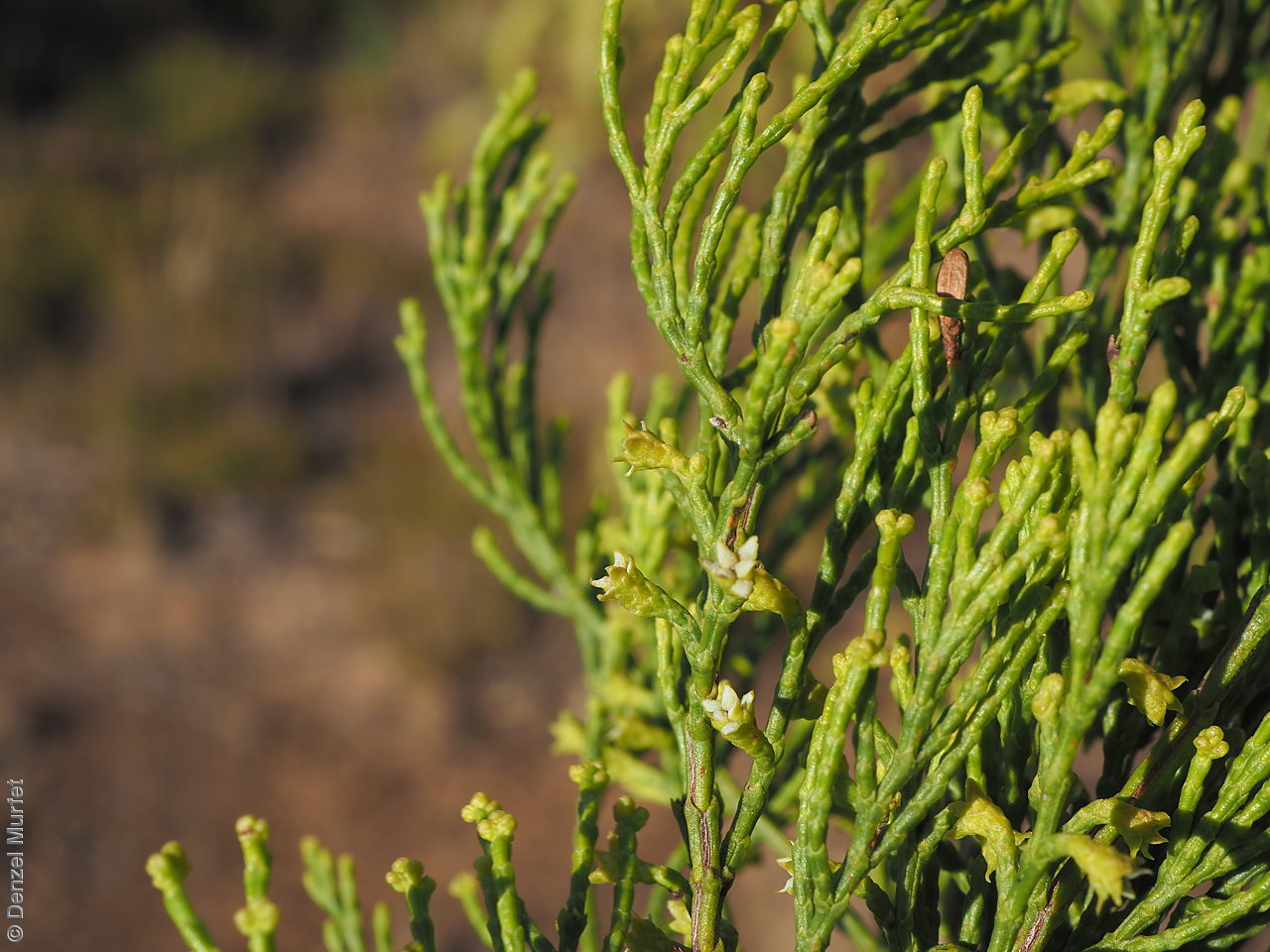
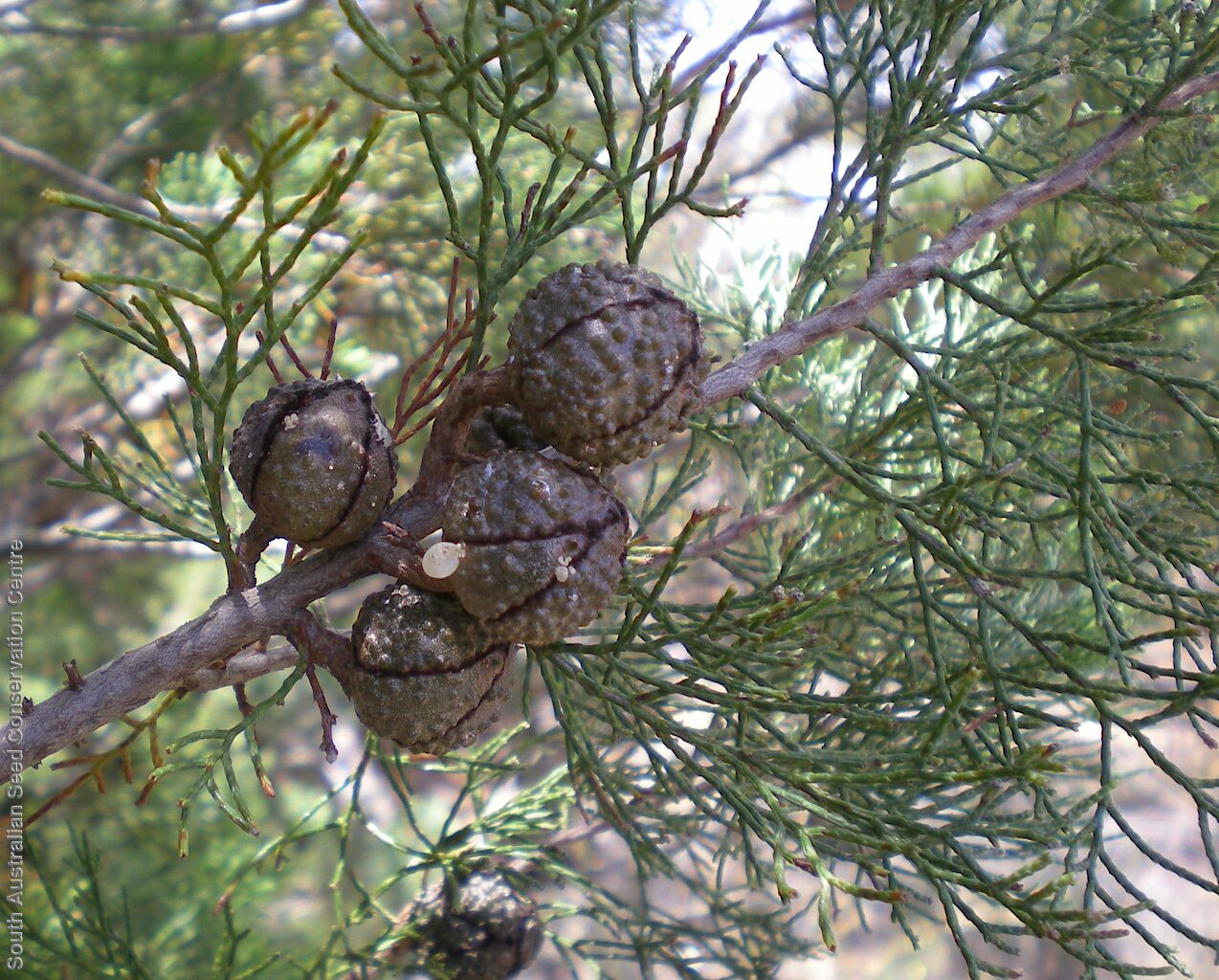
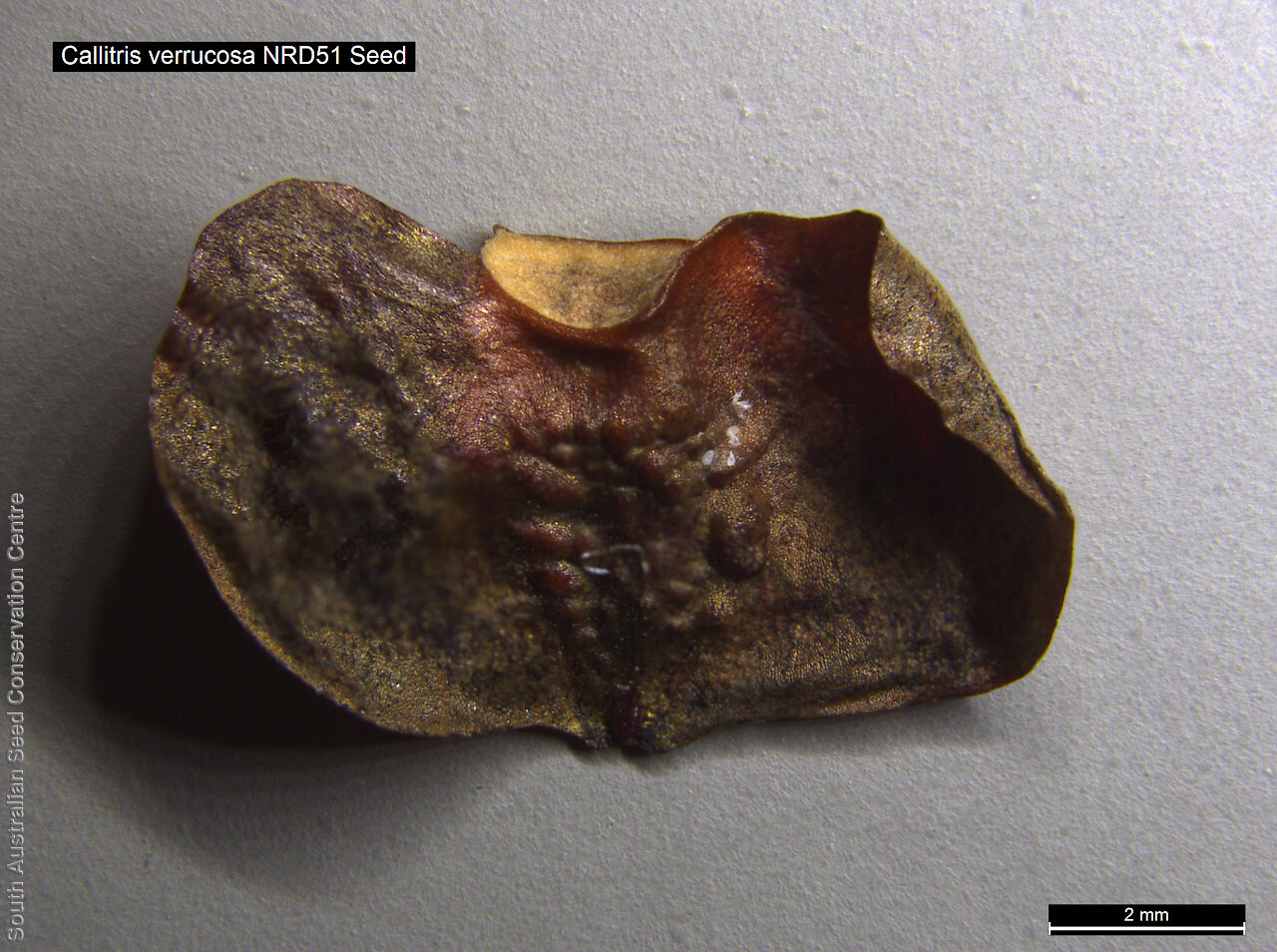
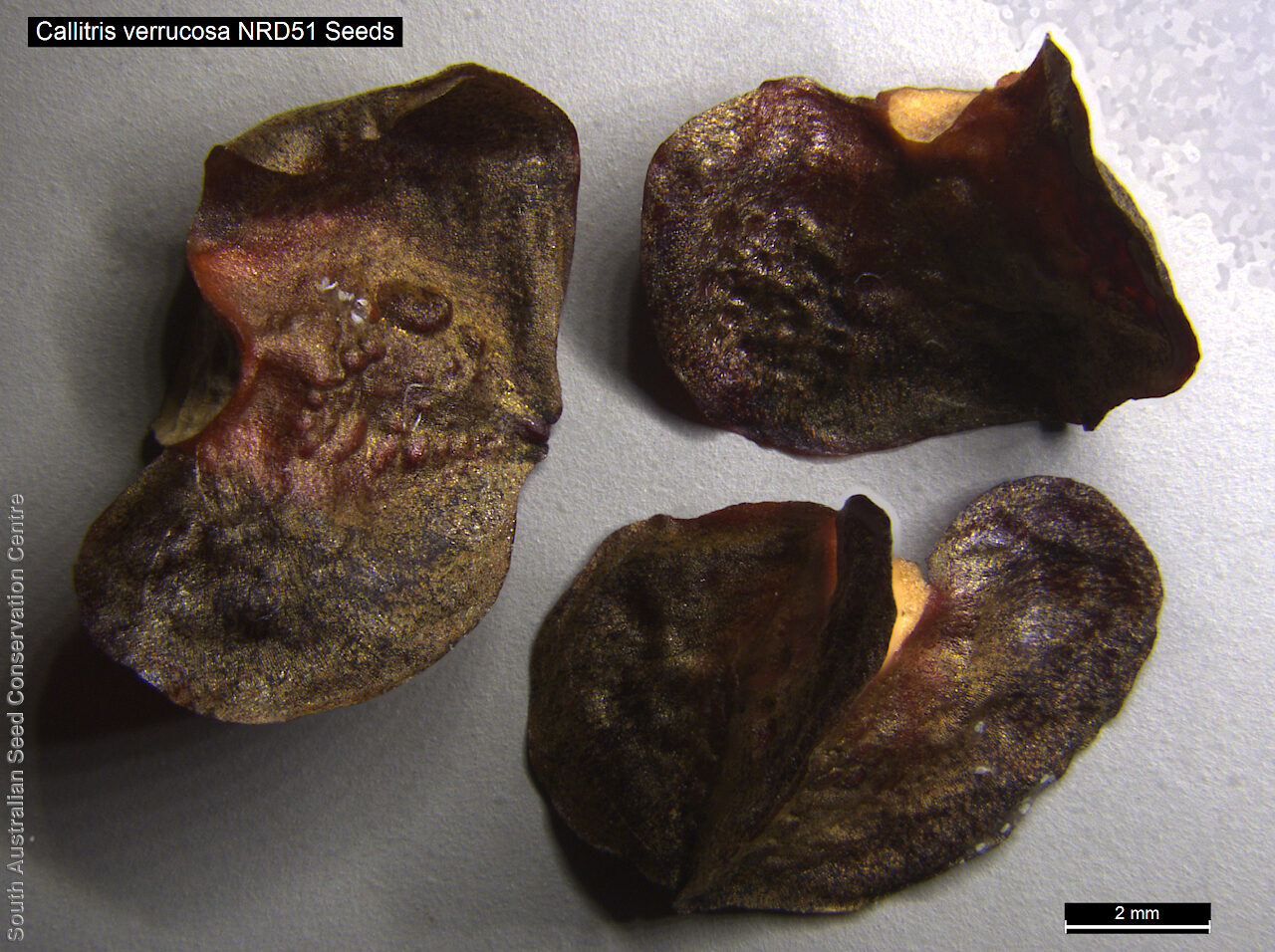
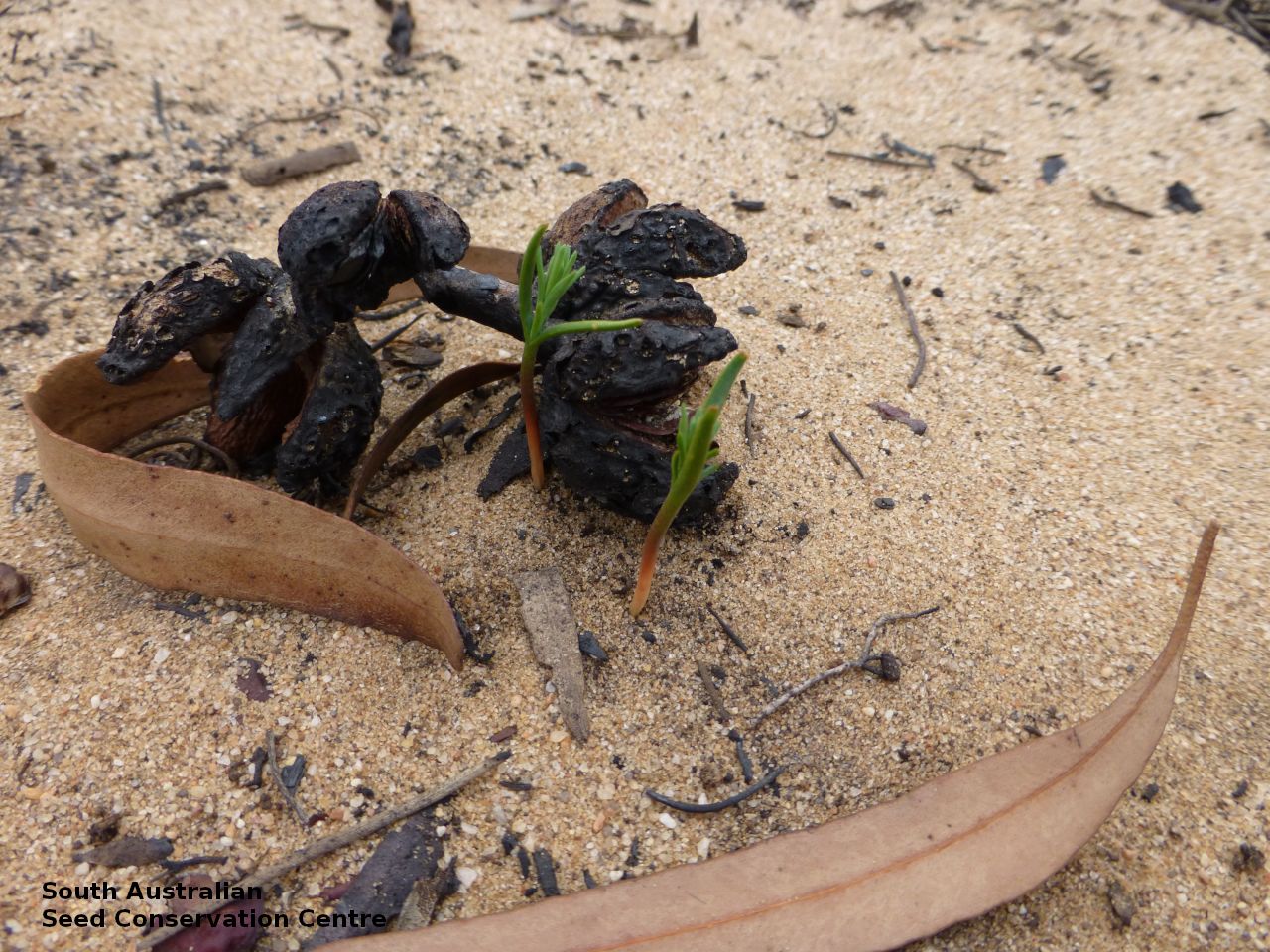
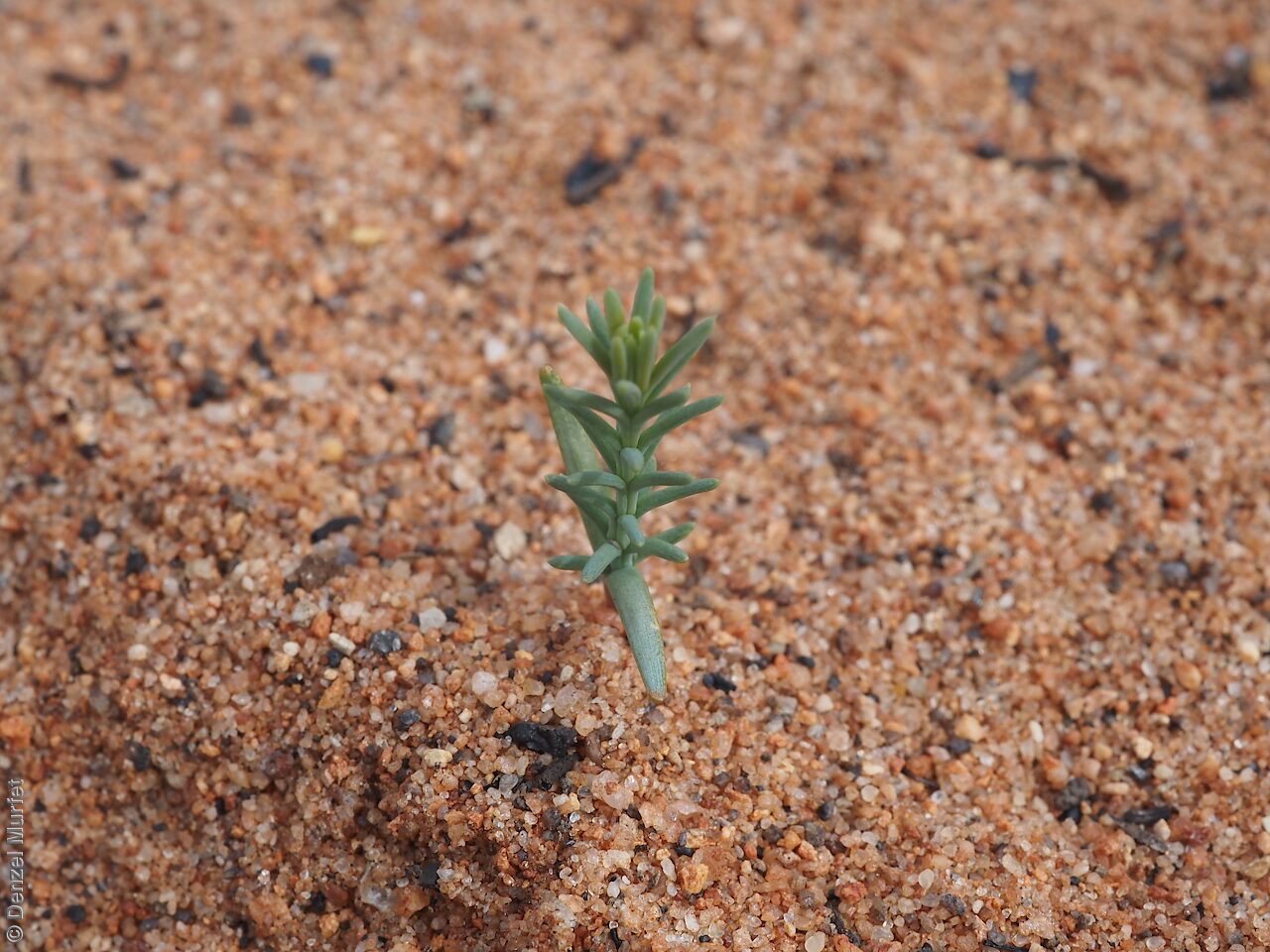
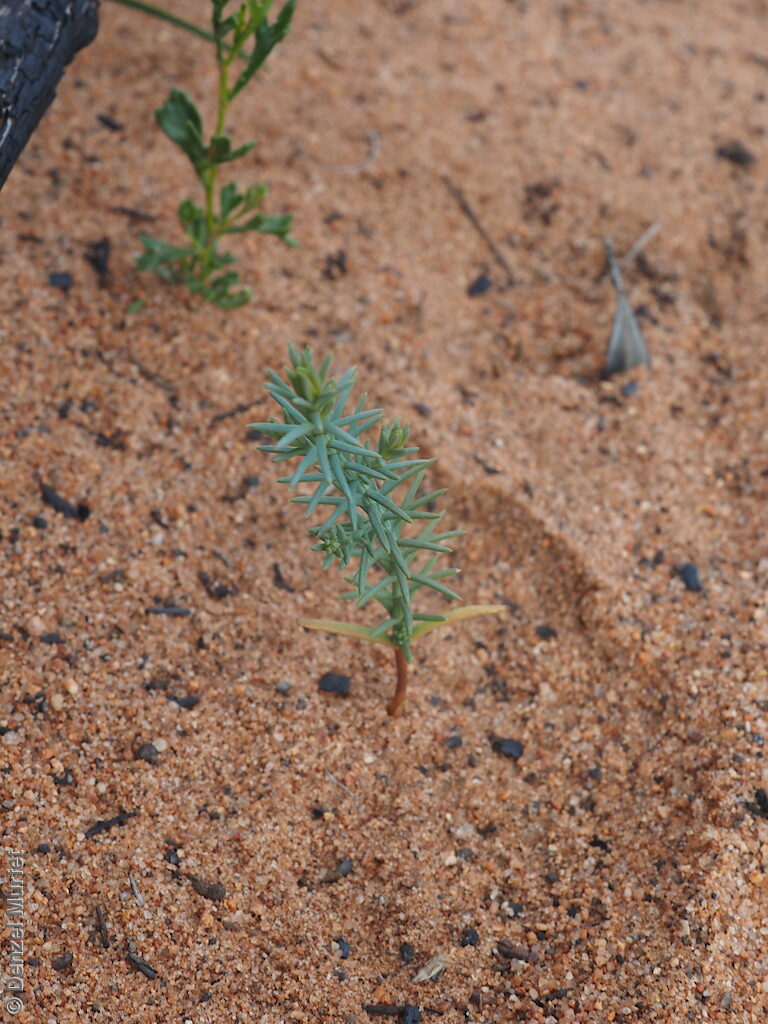

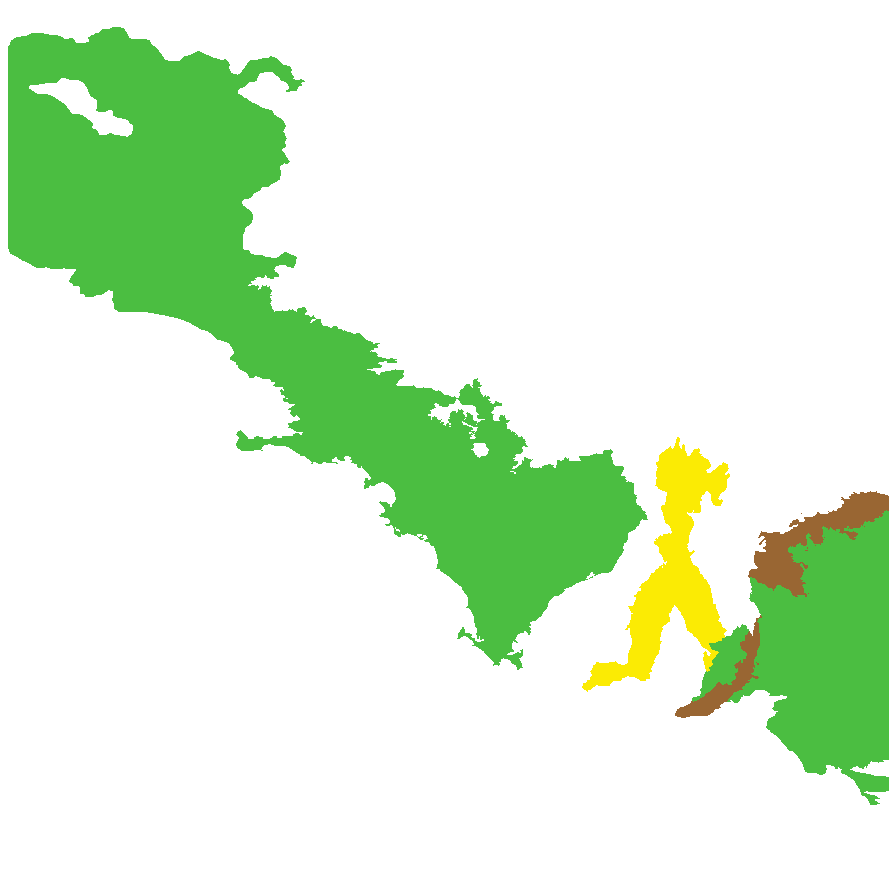
Botanical art
Prior names
Frenela robusta var. verrucosa
Frenela verrucosa
Callitris preissii ssp. verrucosa
Common names
Warty Cypress-pine
Scrub Cypress Pine
Warty Cypress Pine
Etymology
Callitris from the Greek 'kalos' meaning beautiful and 'treis' meaning three, referring to the arrangement of the leaves in whorls of three. Verrucosa from the Latin 'verrucosus' meaning full of warts, referring to the densely tuberculate cones.
Distribution and status
Found along a band from the north-west to the south-east in South Australia, growing in mallee open scrub on deep soils, particularly sand dunes. Also found in Western Australia, New South Wales and Victoria. Native. Common in South Australia. Common in the other States.
Herbarium regions: North Western, Nullarbor, Gairdner-Torrens, Flinders Ranges, Eastern, Eyre Peninsula, Northern Lofty, Murray, Yorke Peninsula, South Eastern
AVH map: SA distribution map (external link)
Plant description
Shrub or tall shrub to 8 m high, usually multi-stemmed with branches erect. Leaves to 4 mm long, green or grey-green, dorsal surface rounded, arranged in whorls of 3. Fruits are male cones clustered, cylindrical, to 5 mm long. Female cones single or in groups of 2 or more, subglobose, to 3 cm wide, surface rugose and densely tuberculate, persistent and holding seeds for several years after maturity. Seeds are dark brown ovoid seed to 7 mm long and 3 mm wide, with wing to 4 mm wide on either side.
Seed collection and propagation
Collect seeds between January and December. Collect cones that are not open but large, hard and dark. These will contain maturing seeds. Place the cones in a tray and leave to dry for 3-5 weeks to allow the cones to open naturally. Then shake the cones in a bucket to dislodge the seeds. Use a sieve to separate the seeds from the cones. Store the seeds with a desiccant such as dried silica beads or dry rice, in an air tight container in a cool and dry place. From one collection, the seed viability was low, at 25%. Viable seed should germinate readily, if stored in a fridge prior to sowing in winter.
| Location | No. of seeds (weight grams) | Number of plants | Date collected | Collection number Collection location | Date stored | % Viability | Storage temperature |
|---|---|---|---|---|---|---|---|
| BGA MSB | 4,136 (130.6 g) 4,136 (130.6 g) | 5 | 5-Dec-2003 | PJA60 North Western | 23-Mar-2006 | 25% | -18°C |
Number of plants: This is the number of plants from which the seeds were collected.
Collection location: The Herbarium of South Australia's region name.
% Viability: Percentage of filled healthy seeds determined by a cut test or x-ray.